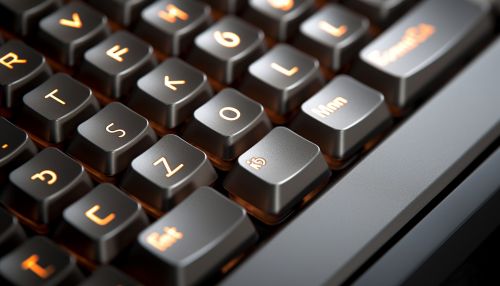Typing Rhythm
Introduction
Typing rhythm, also known as keystroke dynamics, is a detailed study of the way an individual types on a keyboard. This field of study is a subset of behavioral biometrics, which focuses on the unique patterns and behaviors exhibited by individuals. The typing rhythm of a person can be as unique as a fingerprint, making it a potential tool for user identification and authentication.


History
The concept of typing rhythm dates back to the era of telegraphy. Telegraph operators could often identify each other by the unique rhythm they used when sending Morse code, a phenomenon known as the "fist" of the operator. This early observation laid the groundwork for the modern study of keystroke dynamics.
Typing Rhythm Characteristics
Typing rhythm is characterized by a variety of factors. These include the dwell time (the duration a key is pressed) and the flight time (the interval between releasing a key and pressing the next one). The rhythm can vary based on the user's emotional state, physical condition, and familiarity with the keyboard layout. It also changes subtly over time due to aging and other factors, necessitating regular updates to any systems that use typing rhythm for identification.
Applications
Typing rhythm has a wide range of applications, particularly in the field of cybersecurity. It can be used for user authentication, intrusion detection, and continuous user verification. The latter is especially important in sensitive environments where unauthorized access to a logged-in session can have serious consequences.
Research and Development
There is ongoing research in the field of typing rhythm, with scientists continuously refining the algorithms used to analyze keystroke dynamics. The goal is to improve the accuracy and reliability of these systems, making them more practical for real-world use. Machine learning techniques, such as neural networks, are often used in this research.
Challenges
Despite the potential of typing rhythm as a biometric, there are several challenges to its widespread adoption. These include the need for large amounts of data for accurate identification, the variability of typing behavior, and the potential for mimicry attacks. Furthermore, there are privacy concerns associated with the collection and storage of biometric data.
Future Prospects
The future of typing rhythm as a biometric is promising, with potential applications in a wide range of fields. As the technology matures and the challenges are addressed, it could become a common method of user authentication, providing a balance between security and user convenience.
